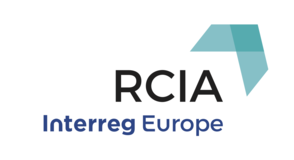A cultural good or service has a social value and it does not reach its full meaning if it does not have an impact beyond the creative act that has given its nature. It will keep the meaning and the intentionality granted by its authors, but it will not obtain its full sense without interacting with the public. The cultural goods or services need the public, the audiences, to obtain their plenitude.
On the other hand, cultural goods and productions are considered social rights and therefore public institutions must guarantee citizens access to them. The homogenisation of global tastes and productions endangers the cultural diversity of Europe, that must be preserved. Helping cultural companies to develop an audience plan must be an essential tool to give relevance to their creative proposals.
As we have seen above, cultural consumption in Catalonia is far below its maximum potential, mainly in performing arts, cinema or audio-visuals addressed to local audiences. Recent surveys assign different levels of potential audiences depending on the nature of each cultural activity. In any case, most of the activities promoted by public institutions are far below.
Needless to say that the public investment in culture must correspond to a satisfactory level of audience to guarantee an efficient and fair allocation of public funding. This statement is the basis upon which our Action Plan is set up. In other words, the policy makers have to provide the necessary audience promotion instruments as an element to give social and / or economic relevance to culture.
The Audience Development Action Plan of the Institute of Cultural Enterprises of Catalonia (ICEC) takes into account not only the nature of the artistic works produced but also, and mainly, its target audiences. The instruments used to promote global productions are very different from those addressed to local productions and these differ from the instruments necessary to bring experimental cultural productions to meet small but very sophisticated audiences. As we see, the basic challenge of this plan is designing promotion instruments that match the objectives of target groups addressed.
From a commercial perspective, a proportionality should be kept between public investment in industrialised creative productions and their impact on the audiences. This proportion should be maintained: A high investment should lead to a high impact. From a qualitative perspective, the success indicators are related to the preservation of cultural diversity, experimentation with new concepts, forms, materials, technologies, etc. In this respect, the approach has to be different, because it will be the nature of every creative production (local, artisan, experimental, digital, etc.) that will determine the specific audience.
The Audience Development Action Plan designed by the Catalan Institute of Cultural Companies (ICEC) is intended to reach the whole population of Catalonia, which currently amounts to 7,5 million people. The ICEC, nevertheless, is perfectly aware of the great diversity of the Catalan society and the fact that not all the society has a priority interest for culture.
In fact, investigations in the field of the development of audiences such as those of Alan R. Andreason, Alan Brown, Matt Lehrman or Katy Raines, revealed that around half of the population does not have a definite interest in the cultural offer while the rest has more positive attitudes although of different intensity.
Thus, among the population with a negative attitude towards culture, these authors differentiate between the part of the population that shows aversion or disinterest (about 30% of the population) and the one representing those who are unaware of the cultural supply (20%) either because of lack of information or of lack of social stimulus.
On the opposite part, among the population sensitive to the cultural offer, the same author differentiates between three groups:
• The “Faithful” (10%), who find the only limitation to consume more culture in the lack of time,
• the “Positive” (15%), who are consumers of low or moderate frequency, who are looking for entertainment, are price sensitive and tend to avoid risk or innovation,
• the “Interested” (25%), who are people aware of the cultural offer but do not show a proactive attitude towards consumption. The lack of social stimulus, in some cases, constitutes the fundamental barrier to a more positive attitude towards cultural consumption.
The idea of defining the public policy actions taking into account the segmentation of the CCI productions and their segmented publics is one of the main lessons of the RCIA project for the exchange of good practices in the field of CCIs. In this sense, this new approach should significantly increase the effectiveness of cultural policy.
The development of audience in the live arts was also a key topic of a panel of the Creative Business Policy Seminar help in Copenhagen on 19 November.












